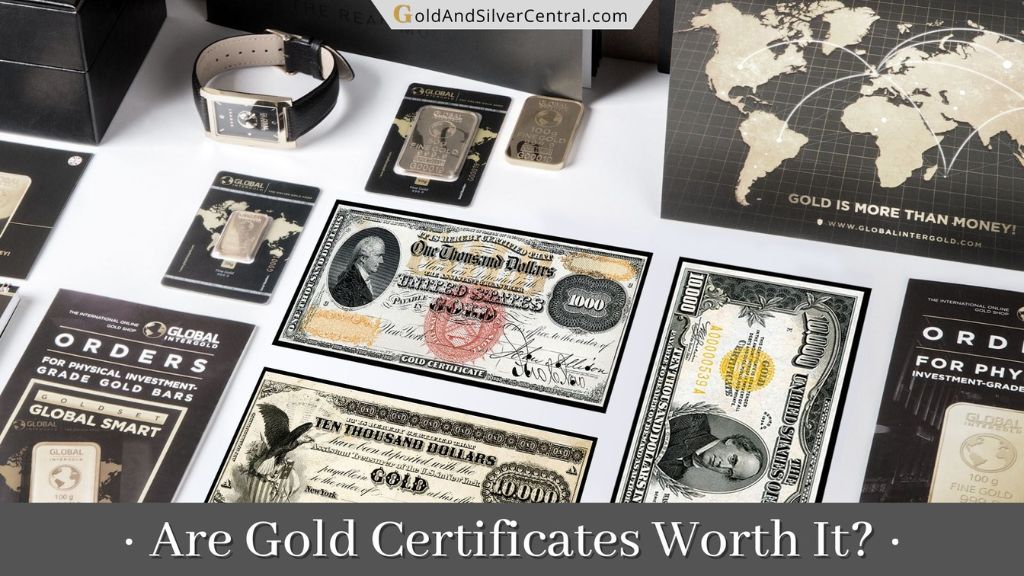Look:
Refining gold is like a magic trick—it lets you change rough-around-the-edges gold into the best, most valuable version of itself.
With this process, you get the chance to clean up your jewelry, give new life to scrap gold, or even try your hand at pulling it out of different sources.
It’s a bit like a treasure hunt, letting you discover the hidden potential in this precious metal and bring out its true sparkle.
How is gold refined and purified?
In this info guide, we’ll dive deep into each method, handing you step-by-step instructions, safety tips, and some helpful hints to make your adventure successful.
Ready to shine? Let’s get started!
How Is Gold Purified? (Top 3 Methods)
Before we get into specific details or instructions, you should know that there are 3 most popular ways to refine gold using acid, fire, and electricity.
1. Using Acid
It is most certainly the most common technique to refine and purify your precious metals.
In a nutshell, you use hydrochloric acid and nitric acid to remove impurities from gold. After this process, you get a 99.999% gold.
2. Using Fire
The heat is one of the common refining methods used since ancient times.
What happens when gold is heated?
When you use a highly temperature-resistant container with gold scraps and put it inside the furnace with 2,000 degrees Fahrenheit, the yellow metal melts.
And it is then moved to another container leaving other substances floating at the surface.
3. Using Electricity
How do you refine gold with electricity?
This interesting method is commonly known as the ‘Wohlwill Process’, that was invented in 1874 and named after its inventor Emil Wohlwill.
You have three components here:
- a cast gold ingot that serves as an anode
- pure 24K carat gold sheeting that serves as a cathode
- an electrolyte solution
In this electrochemical process, when you add the anode and the cathode in the electrolyte solution an electric current travels through it.
As a result of this electricity effect, the anode gets dissolved, and the gold is plated onto the cathode, making it 99.999% pure.
Now, let’s get into the specific ways that you can use to refine and purify gold.
Method 1: Using a Gold Refining Kit
This is a pretty powerful way to do the job for enthusiasts and pros alike.
For example, you can use the Aqua Regia refining system, which has a knack for dissolving gold and weeding out the impurities.
Important note:
This method involves handling corrosive acids and doing reactions that produce deadly fumes. Make sure to use proper safety equipment to avoid serious health injuries.
Now with this disclaimer out of the way, let’s break down how to use this tool to give your precious metal a shiny makeover.
Know Your Tools
First up, get cozy with your gold refining kit.
Read the instructions, and get to know what each chemical and tool in the kit does. You’ll usually find nitric acid, hydrochloric acid, glassware, filters, and safety gear.
Knowing your kit inside and out makes the refining process smoother and safer.
Understanding Aqua Regia
So, Aqua Regia is a mixture of nitric acid (HNO3) and hydrochloric acid (HCl), optimally in a molar ratio of 1:3.
These two combine to dissolve gold efficiently and help you part ways with those pesky impurities.
Just a reminder, though, Aqua Regia isn’t your everyday potion – it’s corrosive and can kick up some strong fumes.
So, handle it with care, okay?
Prep and Safety Measures
Before you start, let’s make sure you’ve got everything you need – heat-resistant glassware, a scale, gloves, goggles, and a chemical-resistant apron.
And of course, a dedicated workspace that’s free from potential clutter and contamination.
Find a spot with good ventilation (open windows or a fume hood can help) and a heat-resistant surface to work on, like a lab bench or non-flammable table.
Weigh, Mix, Repeat
Weigh your gold with a precise scale, then figure out how much nitric acid you’ll need to dissolve it (the kit’s instructions will help here).
Pop it into a glass container, add the correct amount of nitric acid into the hydrochloric acid, then give it a gentle swirl to get everything mixed and melting.
Now, this concoction will create strong fumes, so keep that ventilation in check!
Kick Out the Impurities
After the metal’s dissolved, you might spot impurities floating around there.
Time to bring out the filters and separate those substances from your gold solution. The filters will catch the unwanted stuff, leaving your solution much cleaner.
Precipitate the Gold
Time to bring back the yellow metal!
To get it back from the Aqua Regia solution, you’ll need a chemical-reducing agent like sodium metabisulfite or oxalic acid.
Add this powder to the filtered solution and watch as the gold particles start to form. These can then be easily collected for the next step.
Clean and Dry
Give the yellow particles a good rinse with distilled water to remove any leftover impurities or chemicals.
Then, let them dry using a gentle heat source or just let them air dry. Make sure your refined precious metal is bone dry before processing or storing it.
Method 2: Electrolytic Refining
Think of it as your power-up session.
By using electrical currents, this method takes your gold to a whole new level of purity. It’s highly effective and gives you eagle-eye control over the refining process.
Understanding This Process
It is like an electrical treasure hunt.
You pass an electric current through a solution that has gold in it. This makes the impurities break away from the yellow metal and head towards the opposite electrode.
Why? Because different metals are attracted to electrical currents in different ways. So, the impurities are lured away, leaving behind pure gold.
Gather the Necessary Equipment
First, make sure you’ve got all your gear.
You’ll need an anode (this is your impure gold), a stainless steel or 24K carat gold cathode, an electrolyte solution, a power source, a beaker or container, and wires or clips to connect everything.
And remember, keep your gear and area clean and contaminant-free.
Setting Up the Electrolytic Cell
Next, fill a container with your electrolyte solution. This is usually a mix of hydrochloric acid and a gold chloride compound.
Pop the anode and stainless steel cathode into the solution, keeping some space between them.
Now, connect the anode and cathode to your power source — the gold anode goes to the positive terminal and the stainless steel cathode to the negative terminal.
Initiating the Electrolysis Process
With everything connected, turn on the power source to get the electrolysis process going.
The electrical current will flow through the cell and dissolve the anode. The impurities will make a beeline for the cathode, leaving pure gold behind at the anode.
Monitoring and Refining
Keep a close eye on the process.
As the cathode starts collecting the impurities, you’ll need to detach and clear them from the stainless steel surface from time to time.
This keeps the impurities from crashing the gold’s purity party.
Final Steps and Drying
When your precious metal reached the level of refinement you want, take the pure gold out from the anode.
Give it a good rinse with distilled water to get rid of any leftover electrolyte solution, and then let it dry out completely.
As for the impurities at the cathode, dispose of them following local regulations.
Next, how is gold purified by fire?
Method 3: Gold Melting Furnace
This is your ultimate heat therapy.
It uses blazing-hot temperatures to melt the metal and part ways with impurities, leading to purer, shinier gold.
This method can handle big-time gold refining, making it a favorite among enthusiasts.
Let’s jump into how to use this tool.
Selecting the Right Gold Melting Furnace
Picking a gold-melting furnace isn’t rocket science, but there are a few things we need to consider. How much gold it can handle, temperature control, safety features, and energy efficiency.
There are different types out there, like electric resistance furnaces, gas-fired ones, and induction furnaces.
You’ll need to find/choose the one that fits your needs.
Preparing the Furnace and Workspace
Next up, we’re going to need a workspace that’s safe and suitable for our furnace. It has to be well-ventilated (we don’t want to be inhaling any fumes) and heat-resistant.
The furnace needs to be on a stable surface, and we’ve just got to follow the user manual for setup and operation.
Preparing the Metal
Before you start melting, you have to weigh and prepare the gold. Get rid of any non-metal materials that’ll interfere with the melting process.
A good clean to get rid of dirt, dust, or other muck is a must; we want the refined gold to be top-notch.
The Melting Process
When everything’s set, we place the yellow goods into the crucible or melting dish of the furnace.
Set the temperature as advised in the user guide and let the furnace heat up. Keep an eye on it to make sure the gold is melting evenly.
Removing Impurities
As the gold melts, the impurities start showing their true colors.
They’ll float to the surface, and we use a skimming tool or spoon to scoop them off. A word of caution, though, it’s really hot, so you have to be careful.
Pouring and Solidifying
After we’ve done a good job skimming off the impurities, we pour the liquid gold into a prepped mold or container. Then it’s time to kick back and let it cool down and solidify.
Depending on the type of furnace and the metal, we might need to do a little extra, like annealing or quenching, to get the gold just how we want it.
Cleaning and Finishing
Once the gold is solid and cool, we carefully take it out of the mold or container. A rinse with water will wash off any impurities or residues left behind.
A gentle cleaning with a soft brush or cloth is the final step to making our yellow metal shine. Now, we’re left with beautifully refined gold. Pretty neat, right?
Final Words
Gold refining might come across as some serious rocket science, but trust us, with the right techniques, it’s totally doable.
In this guide, we’ve cruised through 3 pretty straightforward ways to purify gold:
- Using a refining kit
- Purifying gold using electricity
- Gold-melting furnace
Each one has its own cool features and considerations, fitting different skill sets and needs.
No matter which route you take, let’s remember safety is king!
Stick to the playbook, be extra careful when dealing with chemicals and equipment, and ensure you have good ventilation, the right gear, and a dedicated workspace.
That’s your ticket to a smooth and safe refining process.
As you step into this adventure, remember this: it’s all about patience, practice, and the eagerness to learn.
Refining gold is not just a rewarding process but a neat learning experience too. It’s like unlocking the superpowers of this precious metal.
And don’t forget to do your homework, look for reliable sources, and get a few tips from the pros in the field. We’re all here to learn, right?
Now:
You don’t need to refine your own gold to have a piece of this shiny yellow metal!
With Augusta Precious Metals, you can purchase a physical coin or buy one for your IRA. That’s why it’s our #1 recommended Gold IRA company in the US!
The best part? They provide free education about how to invest in precious metals and how to use it for diversification. They will also hold your hand every step and do 95% of the paperwork.
If you’re interested, call the Augusta team at 833-989-1952 to learn more.
You can also grab their guide here and get a FREE GOLD coin when you open an IRA account with them.





